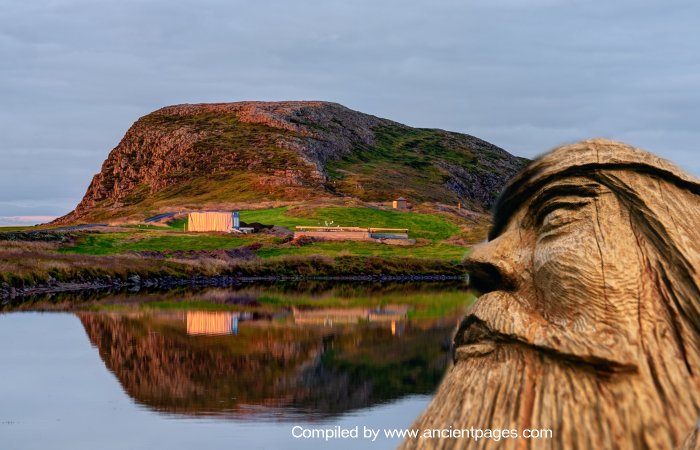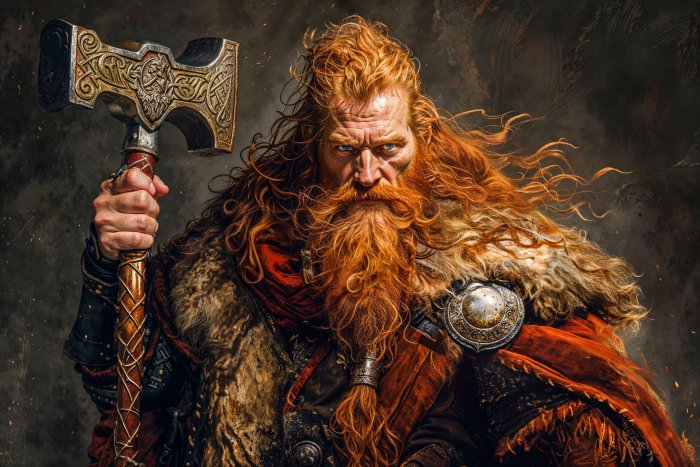Sacred Helgafell Mountain And The Story Of Torolv Mostrarskjegg
Ellen Lloyd - AncientPages.com - Natural landmarks held significant importance in the daily lives and cultural practices of the Pagan Vikings and Norse people.
In contrast to other ancient civilizations, the Pagan Vikings did not have a structured priesthood or religious leaders. Furthermore, they did not utilize temples or other religious edifices when offering homage to the Norse gods in their Pagan practices. Vikings worshipped their gods in different ways but according to local customs.
Venerating Norse deities was often practiced on farms and at sacrificial sites. Furthermore, in Norse culture, natural features within the landscape were also chosen as sites for worship. There is strong evidence that nature played a significant role in shaping the spiritual beliefs of the people in the Northern regions.
Mountains were traditionally viewed as sacred spaces, believed to provide a closer connection to deities.
One example of a sacred Norse mountain is Helgafell, near Stykkishólm in western Iceland.
From the Icelandic saga Erbyggja Saga, we learn that Torolv Mostrarskjegg (Mosterskjegg), from Moster, also known as Thorolf Mostur-Beard, a devoted follower of Thor, held this mountain to be so sacred that no one could look at it unwashed, and no living creature could be harmed there." 1
When Torolv Mostrarskjegg emigrated from his homeland Norway, he brought along the pillars of his "high-seat". In a symbolic gesture, he tossed them overboard and they eventually washed ashore at what would later be known as Thorsnes in Breidafjorde. This was a sign indicating where he should establish his new farm.
According to Professor Odd Nordland (1919-1999), a Professor of Nordic cultural and religious history at the University of Oslo, Egil's saga emphasizes the sacred significance of Helgafell.
We learn from Egil's Saga about Mostrarskjegg's special connection to the sacred Icelandic mountain.
"On this peninsula there is a mountain. In this mountain Torolv had such faith, that nobody was supposed to look in that direction without having washed himself. Nothing should be killed on that mountain, neither cattle nor people, if they did not perish by themselves. He called this mountain Helgafell, the 'holy mountain', and he believed that he would go therewhen he died, and all his relations there on the peninsula." 2
"Seen in relation to the abode of the dead otherwise described in the sources containing the Othin-religion, this tradition concerning Helgafell, the "holy mountain" in the Eyrbyggja Saga, is of great importance. The mountain is also described as actually opening to the dead son of Torolv, when he drowns while out fishing," Professor Nordland noted.
On one occasion a herdsman who was put with his sheep witnessed how the "mountain opened on the northern side. He saw great fires in the mountain, and he heard great noises and the chattering over the drinking horns. When he listened, to try to catch what they said, he overheard that Torstein Torskabit and his followers were greeted, and it was said that he should take his place in the other high-seat, facing his ancestors."2
The hall on the Holy Mountain serves as a memorial for ancestors who have passed on. The newcomer is privileged to assume a high rank within this inviting community. This place does not resemble the gloomy realm of Hel, nor does it echo Christian concepts of an underworld filled with torment. Instead, it is considered an ideal destination for those who have departed and entered another realm of existence. Even though plenty of drinking occurs here, it is not Valhalla, the Hall Of The Fallen where Viking hero warriors' Einherjar' dwell after death.
It is said Thor's shrine was once at the top of Helgafell. It was later replaced by church. Credit: Adobe Stock - Sunshower Shots
From another narrative originating from Iceland, the Njåls saga, we encounter a similar tradition where the departed is depicted as entering the mountain. The Njåls Saga tells us that the fishermen at Kaldbak believed they saw sorcerer Svan go into the mountain Kaldbakshorn, and he was heartily greeted there.
"In Njáls saga, Flosi Þórðarson in a dream sees Mount Lómagnúpur in south-eastern Iceland open and a man with an iron staff and a goat-skin jacket comes out. The man calls
on many of Flosi’s men and thus predicts that and in what order they are to die in the upcoming conflict.
He speaks to Flosi and says his name is Jarngrímr, ‘iron mask’. Later in Njáls saga, when Earl Sigurðr has died in a terrible battle in Ireland, one of his men sees him coming home to his farm in Orkney, and rides towards him. They meet and ‘ride under a high hill’ (undir leiti nǫkkurt) and ‘are never seen again’.
In Gísla saga Súrssonar, Gísli in a dream enters a house where he recognises ‘many’ of his ‘friends
and relatives’ sitting around fires drinking. (It is not clear whether they are still alive or not.) The fires are seven in number, and this number indicates how many more years he is to live, a woman
tells him. This good woman (and an evil one) returns repeatedly in his ominous dreams, and on one occasion she takes him to her hall and says this is where he goes when he dies." 3
Helgafell is still held sacred in Iceland. Credit: Adobe Stock - Toi Vido
More examples of sacred mountains can be found in Landnámabók, a Medieval Iceland work.
"Landnámabók gives three accounts that are very brief but seem to reflect the same notions. A certain Kráku-Hreiðarr settled at Steinsstaðir in Skagafjörður, northern Iceland, and ‘chose to
die into mount Mælifell’.
On the Snæfellsnes peninsula, western Iceland, ‘Sel-Þórir and his pagan relatives died into mount
Þórisbjǫrg’.
In Hvammsfjörður, western Iceland, the settler Auðr Djúpúðga, who was a Christian, ‘held her prayers at Krosshólar heights.’ When she died, ‘her relatives had great faith in the heights. A sacrificial construction was erected there, and sacrifices performed. They believed that they would die into these heights.’"3
According to Professor Nordland, it is evident that the concept of viewing the mountain as a post-mortem sanctuary, a place to unite with ancestors, is an ideology that Torolv Mostrarskjegg carried from his ancestral farm at Moster in western Norway. Numerous other Norwegian immigrant families adopted similar practices: They identified specific mountains where they believed their spirits would reside in the afterlife.
The beautiful Helgafell is still sacred to the Icelanders, and there is a common belief that if one ascends to the mountain's peak without glancing backward or speaking, one will be granted the fulfillment of three wishes.
Written by - Ellen Lloyd – AncientPages.com
Copyright © AncientPages.com All rights reserved. This material may not be published, broadcast, rewritten or redistributed in whole or part without the express written permission of AncientPages.com
Expand for references1.Flame Tree Publishing - Norse Myths & Tales: Epic Tales
2. Nordland, O. (1969). Valhall and Helgafell: syncretistic traits of the Old Norse religion. Scripta Instituti Donneriani Aboensis, 3, 66–99.
3. Heide, Eldar. “Old Icelandic and Sami Ancestor Mountains: A Comparison.” In Religions around the Arctic: Source Criticism and Comparisons, edited by Håkan Rydving and Konsta Kaikkonen, 31–76. Stockholm University Press, 2022.
More From Ancient Pages
-
 Mythical Stymphalian Birds: Terrible Winged Maidens With Birds’ Feet
Featured Stories | Feb 27, 2017
Mythical Stymphalian Birds: Terrible Winged Maidens With Birds’ Feet
Featured Stories | Feb 27, 2017 -
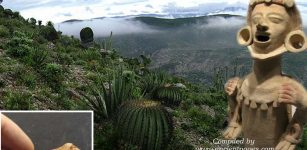 Unexpected Discovery Reveals People Arrived In North America 20,000 Years Earlier Than Previously Thought
Archaeology | Jun 5, 2021
Unexpected Discovery Reveals People Arrived In North America 20,000 Years Earlier Than Previously Thought
Archaeology | Jun 5, 2021 -
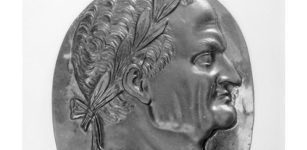 On This Day In History: Vespasian Was Elected The Roman Emperor – On July 1, 69 A.D.
News | Jul 1, 2016
On This Day In History: Vespasian Was Elected The Roman Emperor – On July 1, 69 A.D.
News | Jul 1, 2016 -
 Exploring Future Evolution: How Will Humans Change In The Next 10,000 Years?
Featured Stories | Oct 3, 2022
Exploring Future Evolution: How Will Humans Change In The Next 10,000 Years?
Featured Stories | Oct 3, 2022 -
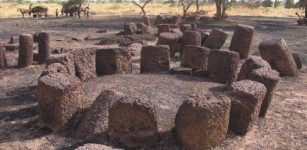 African Stonehenge – Extraordinary Stone Circles Of Senegambia – Who Were The Unknown Builders?
Civilizations | Mar 29, 2014
African Stonehenge – Extraordinary Stone Circles Of Senegambia – Who Were The Unknown Builders?
Civilizations | Mar 29, 2014 -
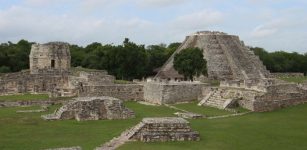 Collapse Of Ancient Mayan Capital Linked To Drought – New Study Suggests
Archaeology | Aug 20, 2022
Collapse Of Ancient Mayan Capital Linked To Drought – New Study Suggests
Archaeology | Aug 20, 2022 -
 Tomb Of God Thoth’s High Priest Discovered In Ancient Egyptian Necropolis
Archaeology | Feb 27, 2018
Tomb Of God Thoth’s High Priest Discovered In Ancient Egyptian Necropolis
Archaeology | Feb 27, 2018 -
 Are The Ten Commandments Based On The Forty-Two Principles Of Maat That Appeared 2,000 Years Earlier?
Biblical Mysteries | Jul 15, 2017
Are The Ten Commandments Based On The Forty-Two Principles Of Maat That Appeared 2,000 Years Earlier?
Biblical Mysteries | Jul 15, 2017 -
 Horrifying Flying Head That Terrorized The Iroquois
Featured Stories | Sep 17, 2019
Horrifying Flying Head That Terrorized The Iroquois
Featured Stories | Sep 17, 2019 -
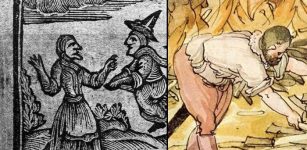 Five Witchcraft Myths Debunked By An Expert
Featured Stories | Oct 27, 2023
Five Witchcraft Myths Debunked By An Expert
Featured Stories | Oct 27, 2023 -
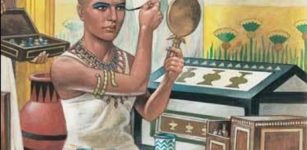 Ancient Egyptian Cosmetics – Why Was It So Important To Both Men And Women?
Ancient History Facts | May 19, 2020
Ancient Egyptian Cosmetics – Why Was It So Important To Both Men And Women?
Ancient History Facts | May 19, 2020 -
 Voice Belonging To 3,000-Year-Old Egyptian Mummified Priest – Recreated
Archaeology | Jan 28, 2020
Voice Belonging To 3,000-Year-Old Egyptian Mummified Priest – Recreated
Archaeology | Jan 28, 2020 -
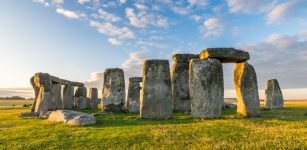 The ‘Stonehenge Calendar’ Is Much More Modern Than Previously Thought – Scientists Say
Archaeoastronomy | Mar 24, 2023
The ‘Stonehenge Calendar’ Is Much More Modern Than Previously Thought – Scientists Say
Archaeoastronomy | Mar 24, 2023 -
 Mystery Of The Lost Biblical Kadesh Where Moses Was Punished By God
Biblical Mysteries | Oct 17, 2017
Mystery Of The Lost Biblical Kadesh Where Moses Was Punished By God
Biblical Mysteries | Oct 17, 2017 -
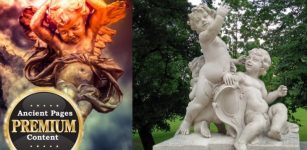 Biblical Cherubim – Sweet Angels Or Dangerous Creatures With A Hidden Agenda?
Biblical Mysteries | Jun 9, 2018
Biblical Cherubim – Sweet Angels Or Dangerous Creatures With A Hidden Agenda?
Biblical Mysteries | Jun 9, 2018 -
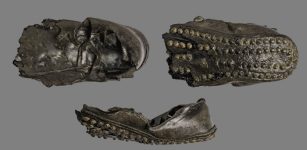 1,700-Year-Old Roman Shoes And An Exceptional Glass Workshop Unearthed In France
Archaeology | Jun 5, 2023
1,700-Year-Old Roman Shoes And An Exceptional Glass Workshop Unearthed In France
Archaeology | Jun 5, 2023 -
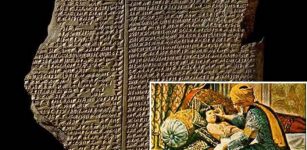 Clay Tablets Reveal Sumerian Doctors Treated Disease With Spells Of Magic And Medicine
Archaeology | Feb 13, 2018
Clay Tablets Reveal Sumerian Doctors Treated Disease With Spells Of Magic And Medicine
Archaeology | Feb 13, 2018 -
 First European Farmers’ Heights Did Not Meet Expectations
Archaeology | Apr 8, 2022
First European Farmers’ Heights Did Not Meet Expectations
Archaeology | Apr 8, 2022 -
 Ancient Books, Scrolls And Manuscripts Burned By Church And Evil Emperors
Artifacts | Aug 27, 2018
Ancient Books, Scrolls And Manuscripts Burned By Church And Evil Emperors
Artifacts | Aug 27, 2018 -
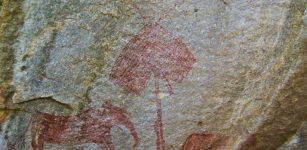 Hundreds Of Rock Paintings Found In Tanzania By Polish Archaeologist
Archaeology | Jul 11, 2018
Hundreds Of Rock Paintings Found In Tanzania By Polish Archaeologist
Archaeology | Jul 11, 2018

